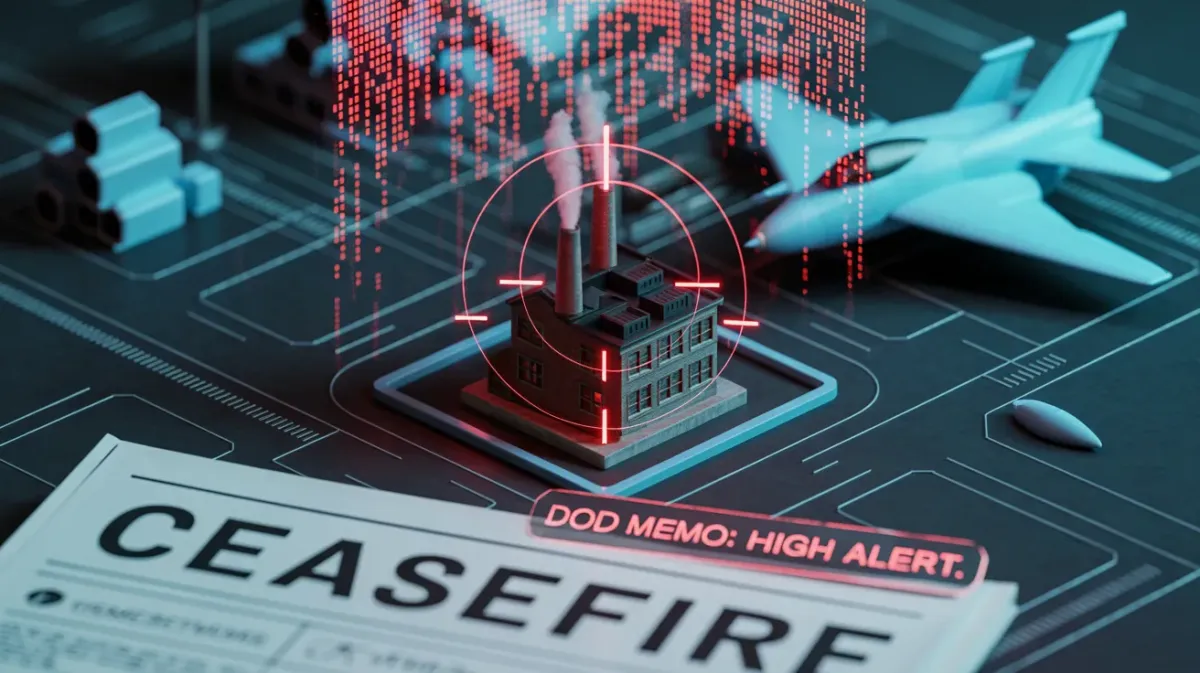
Ceasefire Won’t Stop Cyber Threats: What the DOD CIO Memo Means for Small Defense Contractors
While headlines highlight a ceasefire between Israel and Iran, the Department of Defense (DOD) has warned that the cyber war is still raging—especially against the U.S. Defense Industrial Base (DIB). A recent memo from the DOD Chief Information Officer (CIO) urges every defense contractor, regardless of size, to tighten cybersecurity controls immediately.
This article distills that memo into clear, actionable guidance aligned with CMMC, NIST SP 800-171, and DFARS requirements, so aerospace manufacturers, CNC shops, and IT providers alike can strengthen defenses fast.
Why Cyber Operations Continue After a Ceasefire
Cyber campaigns face far less public scrutiny than kinetic warfare.
Nation-state actors leverage proxy hacker groups to hide attribution.
Critical supply-chain targets—especially smaller subcontractors—often have weaker security controls.
The DOD’s memo signals elevated threat activity despite diplomatic developments, making proactive compliance non-negotiable.
Key Takeaways from the DOD CIO Memo
CMMC & NIST 800-171 Are Not Optional – They are minimum security baselines.
Small and Mid-Sized Businesses Are Explicitly Named – Primes aren’t the only targets.
Immediate Action Required – Waiting for CMMC to appear in a contract clause is a recipe for breach-and-report headlines.
Four Priority Areas – Reduce hack risk, detect threats early, be incident-ready, and secure recovery.
Who Must Comply—and Why It Matters
If your organization handles Controlled Unclassified Information (CUI) or contributes parts, software, or services that flow into a prime contractor—or directly into a DOD program—you are in scope. Non-compliance risks include:
Loss of existing contracts
Disqualification from future bids
Mandatory breach disclosure and legal exposure
The Four-Phase Action Plan
1. Reduce the Risk of Getting Hacked
Enforce Multi-Factor Authentication (MFA)
Remote access
Internal network logins
All admin and privileged accounts
Patch Early, Patch Often
Prioritize the CISA Known Exploited Vulnerabilities (KEV) list.
Shut Down Unused Ports & Services
Disable legacy remote-desktop ports and insecure protocols.
Harden Your Cloud Environments
Follow CISA Cloud Security Guidance for M365, AWS, Azure, or any SaaS handling CUI.
Leverage Free Federal Resources
CISA Cyber Hygiene services
NSA Cyber Collaboration Center
DC3-DIB Collaborative Information Sharing Environment (DCISE)
2. Detect Threats Early
Centralize Log Collection & Monitoring
Deploy a security information and event management (SIEM) tool—or prove an equivalent manual process.
Maintain Up-to-Date Endpoint Protection
Verify antivirus signatures update successfully across every workstation and server.
Audit Third-Party Access
Review vendor remote connections, least-privilege rules, and contract clauses for security obligations.
3. Be Ready for an Incident
Document an Incident Response (IR) Plan
Define roles, decision trees, legal/comms procedures, and cyber-insurance coordination.
Run Table-Top or Live Drills
Validate that alerts route correctly, backups restore, and leadership can act under pressure.
4. Recover Quickly from an Attack
Test and Isolate Backups
Store copies offline or in immutable cloud vaults; perform routine restores.
Prepare Operational Technology (OT) Fallbacks
Ensure critical CNC or PLC processes can run in manual or “island mode” if the network is compromised.
Your Weekly Compliance Checklist
Verify MFA across remote, internal, and admin logins.
Apply patches from the KEV list within prescribed timelines.
Run a backup-restore test and confirm off-network copy integrity.
Review log and SIEM alerts for anomalies.
Update SPRS score—aim for 110—and close any identified gaps.
Free Tools & Reference Links
A political ceasefire may pause missiles, but it rarely slows malicious packets. The DOD’s memo is a clear directive: harden your cyber posture now—or risk mission failure and contract loss later. Implement the four-phase action plan, leverage free federal resources, and get expert help if you’re short on time or talent.
Stay compliant, stay secure, and keep your competitive edge in the defense supply chain.
